Notiz: Take two or three different samples for prediction before the test. Betriebsausrüstung: High-performance liquid chromatography Katalognummer: BC5114
Sizes:50T/48S
Komponenten:
Extract solution I: 80 ml×1. Storage at 2-8℃.
Extract solution II:40 ml×1. Storage at 2-8℃.
Reagenz I: 15 ml×1. Storage at 2-8℃. Vor Gebrauch, nehmen 3.5 mL of reagent I and add it to 1000 mL of ultrapure water, adjust its pH to 6.15 with reagent II to form mobile phase B, and seal it.
Reagenz II:10 mL ×1. Storage at 2-8℃.
ATP Standard: Pulver×1. Lagerung bei -20℃. Vor Gebrauch, 1.8 mL distilled water is added to prepare 1 μmol / mL ATP standard solution, which was frozen at -20 °C. To ensure the integrity of ATP, avoid repeated freezing and thawing.
ADP Standard: Pulver×1. Lagerung bei -20℃. Vor Gebrauch, 2.34 mL distilled water is added to prepare 1 μmol / mL ATP standard solution, which was frozen at -20 °C. To ensure the integrity of ATP, avoid repeated freezing and thawing.
AMP Standard: Pulver×1. Lagerung bei -20℃. Vor Gebrauch, 2.0 mL distilled water is added to prepare 1 μmol / mL ATP standard solution, which was frozen at -20 °C. To ensure the integrity of ATP, avoid repeated freezing and thawing.
Produktbeschreibung:
Nucleotides have important biological functions. They are a class of compounds composed of three substances: purine base or pyrimidine base, ribose or deoxyribose, and phosphoric acid. They are mainly involved in the formation of nucleosides.
Adenosine triphosphate (ATP) is considered to be a universal energy source that is essential for cell synthesis in the survival and reproduction of all organisms. ATP can be produced through a variety of cellular pathways. The most typical example is synthesis by adenosine triphosphate synthase through oxidative phosphorylation in mitochondria, or synthesis by photosynthesis in plant chloroplasts. The main energy sources for ATP synthesis are glucose and fatty acids.
Adenosine diphosphate (ADP) is widely present in animals, Pflanzen, Mikroorganismen, und kultivierte Zellen. In organisms, ADP is a product of breaking a high-energy phosphate bond (ATP) hydrolyzed to lose a phosphate radical) and releasing energy.
Adenosine monophosphate (AMP) ist bei Tieren weit verbreitet, Pflanzen, Mikroorganismen, und kultivierte Zellen. It is formed after ATP and ADP release energy in the body. It can continue to bind phosphate groups to form adenosine diphosphate (ADP) and adenosine triphosphate (ATP). It is the product of incomplete hydrolysis of ATP.
ATP 、 ADP 、 AMP have an absorption peak at 254 nm, and their content can be determined by high-performance liquid chromatography.
Erforderliche, aber nicht bereitgestellte Reagenzien und Ausrüstung:
High-efficiency liquid chromatograph (C18 column (4.6×250 mm), ultraviolet detector (VWD)), desktop centrifuge, verstellbare Pipette, mortar/ homogenizer, brown EP tube, 50 syringe filters (Wasser, 0.45
µm), syringe, suction filter, filter membrane (organic, Wasser), 50 brown injection bottle (2 ml), Acetonitril (chromatographically pure, 500 ml), ultrapure water.
Preparations before the experiment:
- Verwenden 500 mL of chromatographically pure acetonitrile (mobile phase A) Und 1000 mL of configured mobile phase B to filter with a filter membrane to remove impurities in the solvent to prevent clogging the chromatographic column. (Acetonitrile uses a 0.45 µm organic filter membrane for suction filtration, and the configured mobile phase B uses a 0.22 µm aqueous filter membrane for suction filtration).
- Ultrasound the prepared mobile phases A and B for 30 minutes to remove the gas in the solvent to prevent clogging the chromatographic column and affecting the experimental
- Preparation of ATP standard: 1 μmol/mL ATP standard solution is diluted with distilled water to 0.5 μmol/ml, 0.1 μmol/ml, 0.05 μmol/ml, 0.01 μmol/ml, 0.005 μmol/mL ATP standard solution. (The prepared standard concentration is for reference only and can be adjusted according to the actual sample concentration). The standard is filtered using an aqueous syringe filter into the brown injection bottle to be tested (please place it at room temperature before testing, so as not to affect the retention time).
- Preparation of ADP standard: 1 μmol/mL ADP standard solution is diluted with distilled water to 0.5 μmol/ml, 0.1 μmol/ml, 0.05 μmol/ml, 0.01 μmol/ml, 0.005 μmol/mL ADP standard solution. (The prepared standard concentration is for reference only and can be adjusted according to the actual sample concentration). The standard is filtered using an aqueous syringe filter into the brown injection bottle to be tested (please place it at room temperature before testing, so as not to affect the retention time).
- Preparation of AMP standard: 1 μmol/mL AMP standard solution is diluted with distilled water to
0.5 μmol/ml, 0.1 μmol/ml, 0.05 μmol/ml, 0.01 μmol/ml, 0.005 μmol/mL AMP standard solution. (The prepared standard concentration is for reference only and can be adjusted according to the actual sample concentration). The standard is filtered using an aqueous syringe filter into the brown injection bottle to be tested (please place it at room temperature before testing, so as not to affect the retention time).
Verfahren
1. Probenvorbereitung:
-
- Gewebeprobe: According to the ratio of tissue (G): extract solution I (ml) = 1:5~ 10 (it is recommended to weigh 3 g tissue sample and add 1.5 mL extract solution I) to add extract solution I, homogenate on ice, and extract in an ice bath for 40 Mindest. Zentrifuge bei 10000 U/min für 10 min at 4°C, take 750μL of the supernatant, add 750μL of extract II, shake well (5 Mindest) and mix well, Zentrifuge erneut bei 10000 rpm at 4°C for 10 Mindest, and take the supernatant to filter with an aqueous syringe filter into the brown injection bottle to be tested at room temperature (innerhalb 2 H).
- Zellprobe: According to the ratio of 10 Millionen Zellen (Einheiten): extract solution I (ml)= 1000~500:1 (it is recommended to take 10 million cell samples and add 1 mL extract solution I) add extraction solution I, ultrasonic breaking Cells on ice (power 300W, ultrasound for 3 Sekunden, interval of 7 Sekunden, total time of 3 Protokoll); centrifuge at 4℃, 10000 U/min für 10 Protokoll, take 750μL of the supernatant, add 750μL of extract II, shake well (5 Mindest) and mix well, Zentrifuge erneut bei 10000 rpm at 4°C for 10 Mindest, and take the supernatant to filter with an aqueous syringe filter into the brown injection bottle to be tested at room temperature (within 2h).
- Serum: It is recommended to take 0.4 mL serum sample, hinzufügen 0.6 mL extraction solution 1, and extract for 40 min in an ice bath. Zentrifuge bei 10000 U/min für 10 min at 4°C, take 750μL of the supernatant, add 750μL of extract II, shake well (5 Mindest) and mix well, Zentrifuge erneut bei 10000 rpm at 4°C for 10 Mindest, and take the supernatant to filter with an aqueous syringe filter into the brown injection bottle to be tested at room temperature (within 2h).
2. Bestimmung Verfahren:
- Turn on the computer, turn on the switch buttons of each module of the HPLC, install the chromatographic column, open the software, and set the injection volume in the method group to 10µL, column temperature: 27°C, flow rate 0.8 ml/min, and wavelength 254 nm, the elution program is as shown in the table below, and the sampling time is 70 Mindest. After setting, save the method group.
- Clean the column with the mobile phase, equilibrate the column with a mobile phase ratio of acetonitrile: mobile phase B (pH = 6.15) = 2: 98, and start the injection after the baseline is stable.
- Detect the prepared standard solution, the injection volume is 10 µL, the ATP, ADP, and AMP can be separated within 10 Protokoll, and the retention time of ATP, ADP, and AMP is about 7.8 Mindest, 6.7min and 5.4min (the pH of the system, column, mobile phase, usw. are different, the retention time is different, only reference).
- Detect the prepared sample solution, the injection volume is 10 µL, and detect the peak area of ATP, ADP, and AMP at the corresponding retention
| Zeit | Mobile Phase | ||
| A | B | ||
| 0 Mindest | 2% | 98% | |
| 10 Mindest | 2% | 98% | |
| 15 Mindest | 70% | 30% | |
| 50 Mindest | 70% | 30% | |
| 55 Mindest | 2% | 98% | |
| 70 Mindest | 2% | 98% |
3. Berechnungen:
- Draw standard curves of ATP, ADP, AMP with the standard concentration (µmol/mL) as x and the peak area as the y. Substitute the peak area of the sample into the standard curve to calculate the ATP, ADP, AMP concentration x1, x2, x3 (μmol/ml) in the
ATP content Berechnung
- Probengewicht
ATP (μmol/g)=2 x1×VE÷W=3 x1÷W
ATP (μg/g)=2 x1 ×VE×551.14 ÷W=1653.42 x1÷W
VE: volume of extract solution I, 1.5ml; W: Probengewicht, G; MATP: 551.14; 2: Sample dilution factor.
- Liquidvolume:
ATP (μmol/ml)=2 x1 ×VE÷VS=5×x1
ATP (μg/mL)=2 x1 ×VE×551.14 ÷VS =2755.7 ×x1
VE: volume of extract solution I, 1ml; MATP: 551.14; Vs: volume of sample, 0.4ml; 2: Sample dilution factor.
- Zellmenge
ATP (μmol/104 cell)=2 x1 ×VE÷ N =2×x1÷ N
ATP (μg/g104 cell)=2 x1 ×VE×551.14 ÷N =1102.28×x1÷N
VE: volume of extract solution I, 1ml; MATP: 551.14; N: number of cells, 104 as a unit; 2: Sample dilution factor.
ADP content Berechnung
- Probengewicht
ADP (μmol/g)=2 x2×VE÷W=3 x2÷W
ADP (μg/g)=2 x2 ×VE×427.2 ÷W=1281.6 x2÷W
VE: volume of extract solution I, 1.5ml; W: Probengewicht, G; MADP: 427.2; 2: Sample dilution factor.
- Liquidvolume:
ADP (μmol/ml)=2 x2 ×VE÷VS=5×x2
ADP (μg/mL)=2 x2 ×VE×427.2÷VS =2136×x2
VE: volume of extract solution I, 1ml; MADP: 427.2; Vs: volume of sample, 0.4ml; 2: Sample dilution factor.
- Zellmenge
ADP (μmol/104 cell)=2 x2 ×VE÷N =0.002×x2÷N
ADP (μg/g104 cell)=2 x2 ×VE×427.2 ÷N =854.4×x2÷N
VE: volume of extract solution I, 1ml; MADP: 427.2; N: number of cells, 104 as a unit; 2: Sample dilution factor.
AMP content Berechnung
- Probengewicht
AMP (μmol/g)=2 x3×VE÷W=3 x3÷W
AMP (μg/g)=2 x3 ×VE×499.19÷W=1497.57×3÷ w
VE: volume of extract solution I, 1.5ml; W: Probengewicht, G; MAMP: 499.19; 2: Sample dilution factor.
- Liquidvolume:
AMP (μmol/ml)=2 x3 ×VE÷VS=5×x3
AMP (μg/mL)=2 x3 ×VE×499.19÷VS =2495.95×x3
VE: volume of extract solution I, 1ml; MAMP: 499.19; Vs: volume of sample, 0.4ml; 2: Sample dilution factor.
- Zellmenge
AMP (μmol/104 cell)=2 x3 ×VE÷N =2×x3÷N
AMP (μg/g104 cell)=2 x3 ×VE×499.19 ÷N =998.38×x3÷N
VE: volume of extract solution I, 1ml; MAMP: 499.19; N: number of cells, 104 as a unit; 2: Sample dilution factor.
Notiz:
Vorsichtsmaßnahmen:
- After the detection, the chromatographic column needs to be flushed with high-concentration ultrapure water (um 20-30 column volumes) to prevent clogging the chromatographic column. Endlich, flush the column according to the specifications of the column to prevent damage to the chromatographic
- The dilution factor of the standard should be determined according to the concentration of nucleotides in the sample. The peak area of nucleotides in the sample must be within the peak area of the standard solution of different concentrations. The dilution factor of the standard is only a reference. If the nucleotide concentration in the sample is too high, it is recommended to dilute it before
- The sample after extraction is not stable at room temperature, so it needs to be operated as soon as possible.
- If the sample number is too large, it is recommended to test the standard solution once a day (one standard solution is sufficient) to determine the corresponding retention
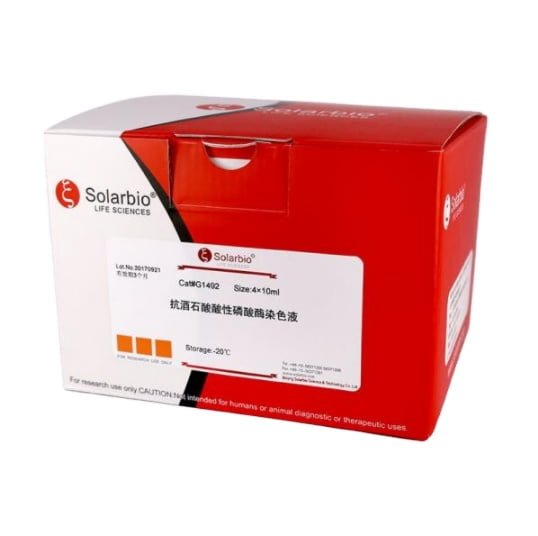
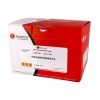
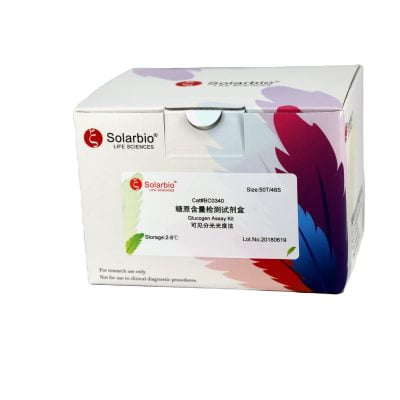
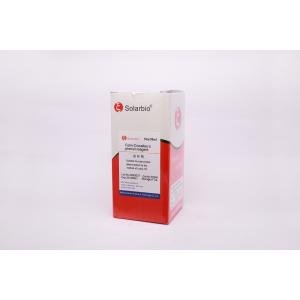

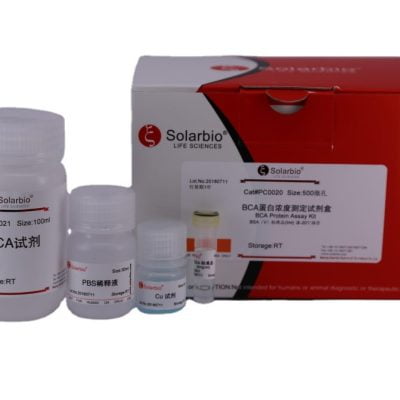
Rezensionen
Es gibt noch keine Rezensionen.